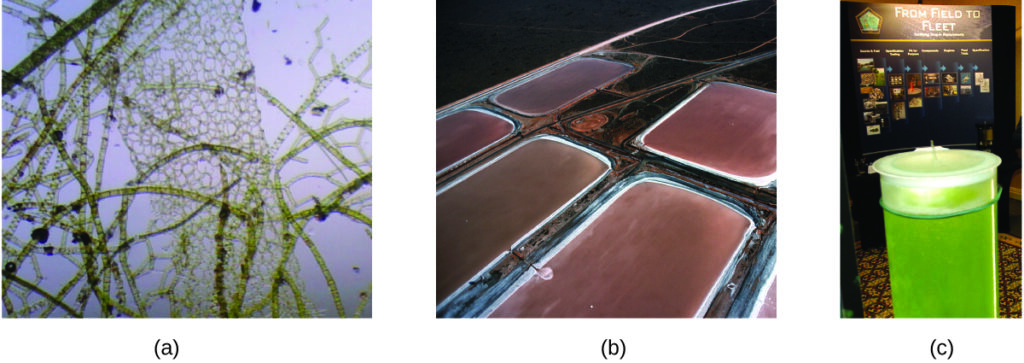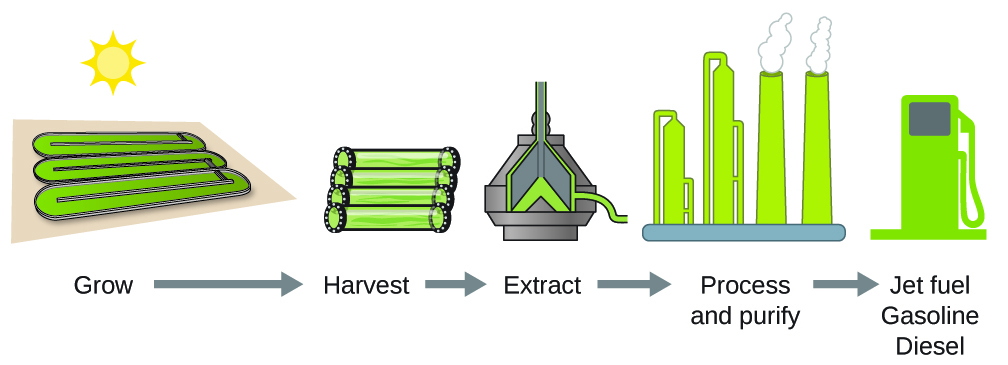Enthalpy Of Combustion Of Ethanol
Standard enthalpy of combustion ($ΔH_C°$) is the enthalpy change when 1 mole of a substance burns (combines vigorously with oxygen) nether standard state atmospheric condition; it is sometimes chosen "rut of combustion." For example, the enthalpy of combustion of ethanol, −1366.eight kJ/mol, is the corporeality of estrus produced when 1 mole of ethanol undergoes complete combustion at 25 °C and 1 atmosphere pressure, yielding products also at 25 °C and 1 atm. $$C_2H_5OH(l)+3O_2(k)⟶2CO_2+3H_2O(l)\qquad ΔH°=−1366.viii kJ/mol$$
Enthalpies of combustion for many substances have been measured; a few of these are listed in [link]. Many readily available substances with large enthalpies of combustion are used equally fuels, including hydrogen, carbon (every bit coal or charcoal), and hydrocarbons (compounds containing merely hydrogen and carbon), such every bit methane, propane, and the major components of gasoline.
| Substance | Combustion Reaction | Enthalpy of Combustion, ΔHc° (kJ/mol at 25°C) | |
|---|---|---|---|
| carbon | $C(southward)+O_2(g)⟶CO_2(k)$ | −393.5 | |
| hydrogen | $H_2(chiliad)+\frac{one}{ii}O_2(one thousand)⟶H_2O(l)$ | −285.viii | |
| magnesium | $Mg(southward)+\frac{1}{ii}O_2(g)⟶MgO(southward)$ | −601.six | |
| sulfur | $S(due south)+O_2(1000)⟶SO_2(1000)$ | −296.viii | |
| carbon monoxide | $CO(m)+\frac{1}{2}O_2(k)⟶CO_2(g)$ | −283.0 | |
| methyl hydride | $CH_4(g)+2O_2(g)⟶CO_2(g)+2H_2O(l)$ | −890.8 | |
| acetylene | $C_2H_2(g)+\frac{5}{2}O_2(g)⟶2CO_2(g)+H_2O(l)$ | −1301.i | |
| ethanol | $C_2H_5OH(l)+3O_2(g)⟶2CO_2(g)+3H_2O(50)$ | −1366.8 | |
| methanol | $CH_3OH(l)+\frac{3}{two}O_2(g)⟶CO_2(one thousand)+2H_2O(fifty)$ | −726.one | |
| isooctane | $C_8H_{xviii}(l)+\frac{25}{2}O_2(g)⟶8CO_2(grand)+9H_2O(l)$ | −5461 | |
Using Enthalpy of Combustion
Equally [link] suggests, the combustion of gasoline is a highly exothermic process. Allow united states of america make up one's mind the approximate amount of heat produced past burning 1.00 L of gasoline, assuming the enthalpy of combustion of gasoline is the same as that of isooctane, a common component of gasoline. The density of isooctane is 0.692 g/mL.

Solution
Starting with a known amount (1.00 L of isooctane), we tin can perform conversions between units until we arrive at the desired amount of heat or energy. The enthalpy of combustion of isooctane provides one of the necessary conversions. [link] gives this value as −5460 kJ per 1 mole of isooctane (C8H18).
Using these information,
$$1.00\;\require{enclose}\enclose{horizontalstrike}{Fifty\;C_8H_{xviii}}\times \frac{1000\;\enclose{horizontalstrike}{mL\;C_8H_{xviii}}}{1\;\enclose{horizontalstrike}{L\;C_8H_{18}}}\times \frac{0.692\;\enclose{horizontalstrike}{grand\;C_8H_{18}}}{1\;\enclose{horizontalstrike}{mL\;C_8H_{18}}}\times \frac{one\;\enclose{horizontalstrike}{mol\;C_8H_{18}}}{114\;\enclose{horizontalstrike}{g\;C_8H_{18}}}\times \frac{−5460\;kJ}{1\;\enclose{horizontalstrike}{mol\;C_8H_{18}}}=−three.31×10^4\;kJ$$
The combustion of 1.00 L of isooctane produces 33,100 kJ of rut. (This corporeality of energy is plenty to melt 99.2 kg, or nearly 218 lbs, of water ice.)
Note: If you practise this adding one step at a fourth dimension, you would find: $$1.00\;Fifty\;C_8H_{18}⟶1.00×ten^3\;mL\; C_8H_{18}$$ $$1.00×10^3\;mL\;C_8H_{18} ⟶692\;chiliad\;C_8H_{18}$$ $$692\;thou\;C_8H_{18}⟶half-dozen.07\;mol\;C_8H_{xviii}$$ $$692\;g\;C_8H_{xviii}⟶−three.31×ten^4\;kJ$$
Bank check Your Learning
How much heat is produced by the combustion of 125 g of acetylene?
Answer: $half-dozen.25×x^3\;kJ$ Emerging Algae-Based Energy Technologies (Biofuels)
Every bit reserves of fossil fuels diminish and become more costly to extract, the search is ongoing for replacement fuel sources for the future. Among the most promising biofuels are those derived from algae ([link]). The species of algae used are nontoxic, biodegradable, and amongst the earth's fastest growing organisms. About 50% of algal weight is oil, which can exist readily converted into fuel such as biodiesel. Algae can yield 26,000 gallons of biofuel per hectare—much more energy per acre than other crops. Some strains of algae tin can flourish in stagnant water that is not usable for growing other crops. Algae can produce biodiesel, biogasoline, ethanol, butanol, methane, and fifty-fifty jet fuel.

Co-ordinate to the US Department of Energy, only 39,000 square kilometers (almost 0.iv% of the state mass of the U.s.a. or less than $\frac{1}{7}$ of the surface area used to grow corn) can produce enough algal fuel to replace all the petroleum-based fuel used in the US. The cost of algal fuels is becoming more competitive—for instance, the Us Air Force is producing jet fuel from algae at a full cost of under $5 per gallon.1 The procedure used to produce algal fuel is as follows: grow the algae (which use sunlight as their energy source and CO2 every bit a raw material); harvest the algae; extract the fuel compounds (or precursor compounds); process as necessary (e.g., perform a transesterification reaction to brand biodiesel); purify; and distribute ([link]).

Click here to larn more almost the process of creating algae biofuel.
Footnotes
- 1 For more on algal fuel, see http://www.theguardian.com/environment/2010/feb/xiii/algae-solve-pentagon-fuel-problem.
Enthalpy Of Combustion Of Ethanol,
Source: https://wpsites.ucalgary.ca/chem-textbook/chapter-5-main/8710-2/
Posted by: alejandrethiciathy.blogspot.com


0 Response to "Enthalpy Of Combustion Of Ethanol"
Post a Comment